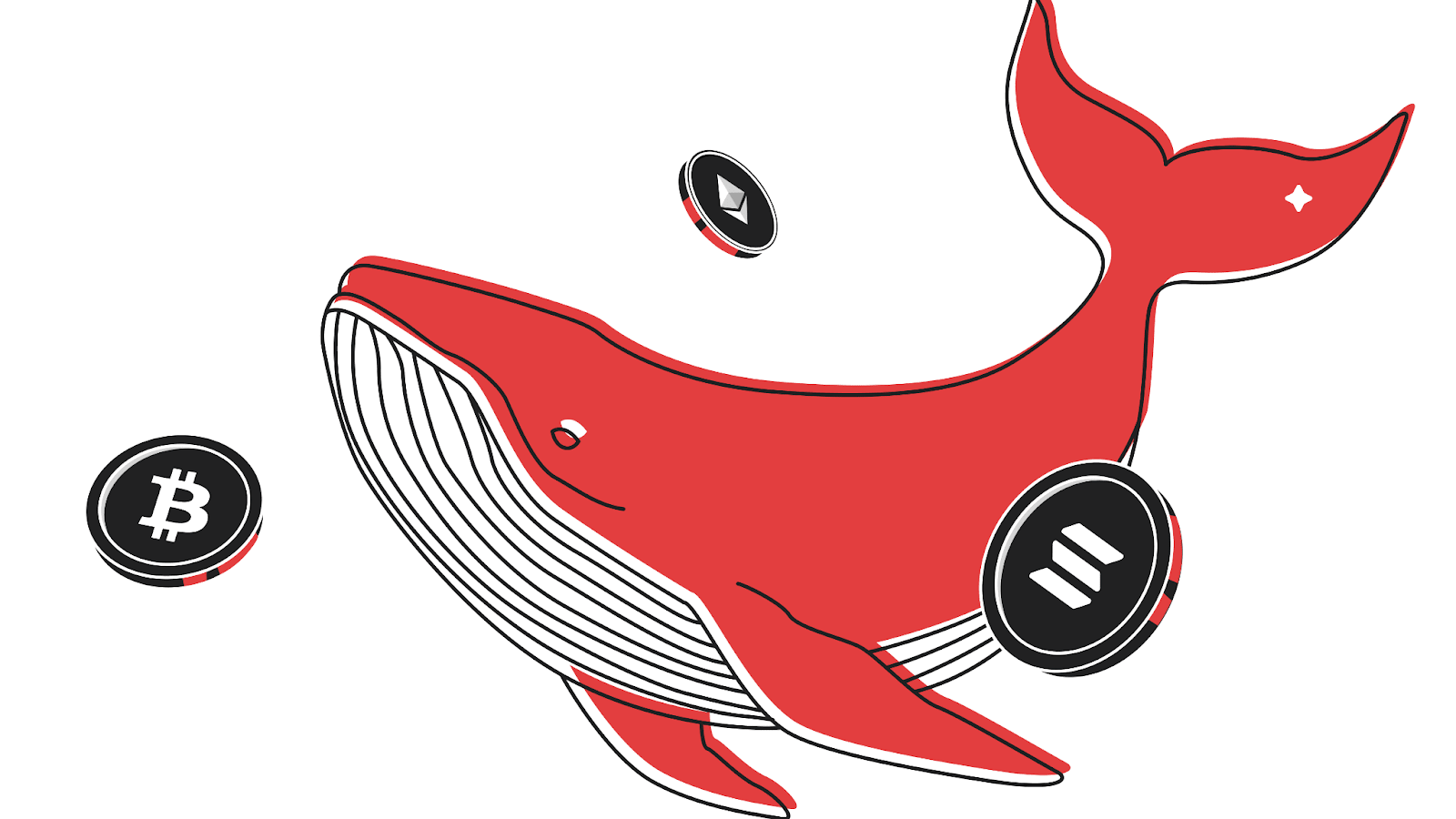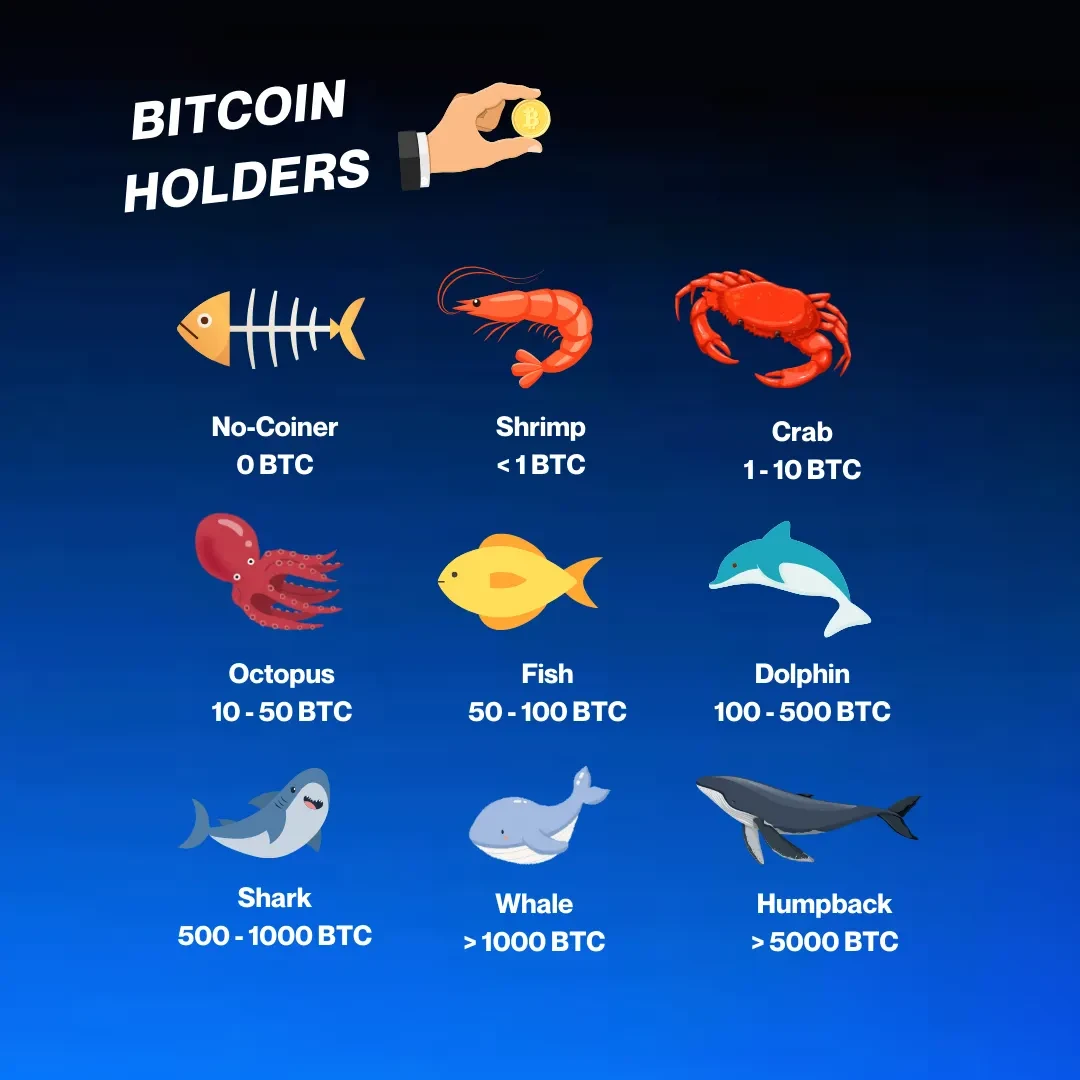The crypto market has become really huge and continues evolving, attracting a broad spectrum of investors, and there are those with extra power — crypto whales. These people (or groups of people) have a huge number of digital assets, which enable them to affect market sentiment, prices, and even governance mechanisms in a blockchain network. For anyone trading in cryptocurrency, it is important to understand what is considered a whale in crypto, or what is a Bitcoin whale, and how they trade, in order to work around the volatility of the market.
So, what is a crypto whale? Crypto whales are large holders of cryptocurrency whose trading activity tends to hit the market price hard. They can be early adopters of coins, institution investors, virtual currency exchanges or even founders of blockchain projects. Their large holdings enable whales to make trades that manipulate the market — whether they are pumping up the price or triggering a panic sell-off.

There are whales on different blockchains, and they control significant holdings of assets ranging from Bitcoin and Ethereum to unknown altcoins. Their assets can have a ripple effect, leading to increased ups and downs in the market or changes in investors’ perceptions. For small traders, following the whales is not just some entertainment but the basis for tactics they use to front-run the market.
Whales play a major role in shaping the crypto landscape, determining price action and liquidity and impacting the way the cryptoprojects evolve.
Their impact on market is manifested in the following aspects:
In a crypto world there are whales of two major types: institutional and retail. The difference between these two is in who they are, how they act, and what are these crypto whale meaning:
Institutional whales are big financial institutions and or hedge funds or crypto native investment products or even corporations. The examples of these include: BlackRock, Grayscale, MicroStrategy, Binance or Coinbase.
They trade on millions to billions of dollars, typically have long-term position bias, professional trading infrastructure, have a large impact on both price and sentiment, and are among the first to lead or follow macro trends, depending on which asset class you are interested in.
As for the retail whales, these are high-net-worth individuals (HNWIs) who put together or bought their own hefty crypto positions. The prime examples are the early Bitcoin adopters, and crypto influencers who held a lot and self-made DeFi millionaires.
Generally they are trading funds on their own, frequent public exchanges over OTC, are sometimes more emotional or speculative, and can end up moving too quickly or selling everything in panic. They do have some impact on the market, creating short-term volatility. Occasionally, they follow trends instead of creating them and overall they are less consistent.
Whether you’re trading cryptos or investing in some particular project, spotting the whale you can give you a huge advantage. Here’s a breakdown to how on-chain data, exchange metrics, and trading behavior can be used to predict whale behavior:
In order to verify a whale wallet address, various on-chain tools, block explorers, and wallet labeling platforms need to be integrated with. Here’s how you can track down and scrutinize whale addresses:
Start with Known Whale Wallets. Some of the whale addresses are publicly known to be associated with Exchanges, Institutions, Protocols, and Crypto Insiders. Go to platforms that can help you to check it: Arkham Intelligence, Nansen, Lookonchain, Whale Alert.
Track Large Transactions. When you spot a massive transaction over on Twitter or Telegram thanks to Whale Alert, click the tx link, and it will take you to a block explorer, which is kind of like this: is Etherscan.io (Ethereum), Tronscan.org (TRON), Blockchain. com Explorer (Bitcoin).
Further, you can Monitor Top Holder Lists. Whales in crypto can be identified by: Balance size (e.g., 1,000+ BTC or 10M+ USDT) Low number of outgoing txs (accumulating) Interactions with exchanges or smart contracts.

To track the whales use Nansen, Arkham or DeBank. These tracker tools provide wallets labeling + tracking + behavioural analytics features: whale wallets tags, DeFi actions, tokens inflows, visualize balances, real identity tagging of institutional wallets. You can go on a platform that lists tokens like that and get a list of tokens on the website and then you can see all of the holders, check if there is the same person in the top, then check his/her operations.
Crypto whale activity is the action of large holders of the cryptocurrency moving large amounts of coins or tokens. These are large movements of cryptocurrency that can have a large effect on the market and cause the price to go up or down.
Whales cause:
The impact of a whale in crypto on the market can be really significant. Thus, in Dec 2020, Bitcoin whales actively bought BTCs and pushed the price to $40,000. In August 2023 the price of the Pepecoin coin crashed by 80% when developers moved a large amount of tokens to exchanges.
Crypto whales, individuals or entities holding large amounts of cryptocurrency, often shift their focus between different altcoins and memecoins, impacting their prices. Some altcoins that have seen recent whale activity include Chainlink (LINK), Ripple (XRP), and meme coins like Dogecoin (DOGE) and Pepe (PEPE). Additionally, PancakeSwap's CAKE token and Solana-based meme coins have also been mentioned as targets of whale accumulation. Other altcoins like JetBolt (JBOLT), NEAR Protocol (NEAR), and Render (RENDER) are showing early signs of strength with increased whale interest.
Whales that hold large amounts of a cryptocurrency significantly impact the market. Their presence introduces new risks and concerns for everyday investors and the market overall. The key risks and market concerns about crypto whales:
Bitocoin whales, or those with large amounts of digital money, are amongst the biggest drivers of market volatility and consensus. They have the power to change prices in the blink of an eye by making enormous trades and they often employ all sorts of tricks, such as “pump and dump” and “wash trading”, to rope other investors in.
Big trades can create movement when whales buy or sell an enormous amount of cryptocurrency at once, it can move the price in the blink of an eye. Whales can pump then dump sentiment and cause FOMO and extra volatility. After all deliberate liquidation events for whales can be triggered by stop-loss order activations if they drive the price to specific points, thereby triggering liquidation cascades.

Also whales may initiate front-running. Their front-run came ahead of such large anticipated orders, putting their information on such orders to profitable use when it comes to the prices they shift.
Whale data can be a powerful way for traders to get an idea of market sentiment and potential price activity, however it is worth keeping in mind that just following crypto whale is not a guaranteed strategy. It will provide an exciting way to analyse and see what big market participants are doing and allow for traders to find their positions with an entirely new level of understanding.
Here’s a rundown on how traders can use whale data:
Thus, whale data can be a helpful resource for traders, but one must utilize it judiciously and in conjunction with other analytical methods. Traders can use the whale data to supplement their trading and make better decisions and achieve better trading results by knowing the market’s sentiment, potential price movements, and risk of manipulation.
Strategic entry and exit signals for crypto trading, especially in the context of whale action, include spotting big trades and analyzing market sentiment for potential price moves. To be slightly more specific, you’ll have to look for large inflows and outflows to exchanges, signs of accumulation, and how the market responds to major events.